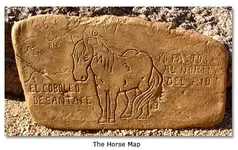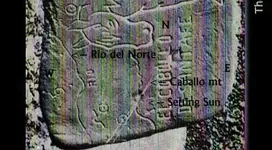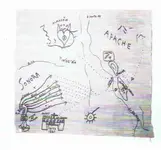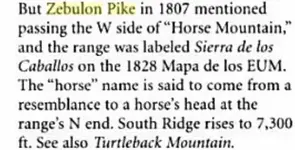Hi sdc: you posted --- First, let me get this straight. Are you saying that the "Peralta Stones" horse map is a Pimeria Alta Jesuit creation that depicts a location in New Mexico, including the "Caballo Mountains"?
Yes or no?
----------
Not a simple yes or no as you well know,,so my answer at this time is (yes or no )
===========
2) If the Jesuits carved it, it was done after 1807 (documented). From where, Europe?
--------
Documented ?? Explain.
======
3) Someone other than the Jesuits carved the stone after 1807.
(My choice)
-----------
Explain why it is your choice. & after 1807

================
Of course, the other possibility is that the Peralta Stone's "Caballo" does
not refer to the New Mexico mountains. A possibility.
------------------
of course, I agree, a possibility, so we are seeking the origin of them which so far points to someone that has the Jesuit knowledge
==============
post 1291 shows the horse map on it's side The nap that you are loking for is at - .'Diggers & Divers - P1- The secret of the Peralta Stone Maps - Treasure Hunting'
'Some hiker' posted it for me 'Yesterday', first that I had ever heard of it. It shows the stones overlay on the map.
Incidentally contrary to his remark about the salt river being in Az.,there is another to the east of Caballo mt.
And here I thought that I had a brilliant original idea sniff
















